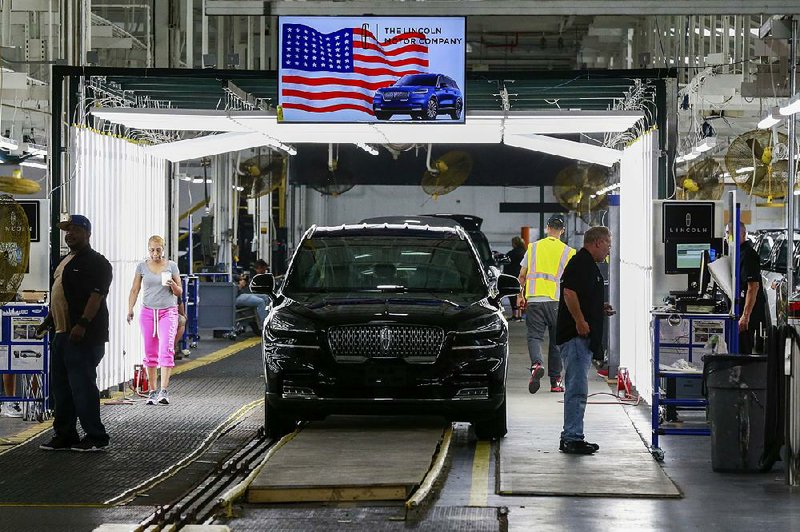WASHINGTON -- U.S. industrial production fell 0.2% in July, as factory activity slumped in a worrisome sign for the economy.
The Federal Reserve said Thursday that the decline was caused primarily by a 0.4% drop last month in manufacturing production. Output decreased for autos, machinery, electronic equipment, fabricated metals, wood products, textiles, and plastics and rubber products.
Over the past 12 months, factory production has fallen 0.5%. Manufacturers' struggles reflect a global softening in growth that has been magnified by President Donald Trump's use of tariffs to escalate a trade war with China.
The risks have been great enough that the financial markets on Wednesday flashed signs of a possible recession. The interest charged on 10-year U.S. Treasury notes fell below the rate charged on two-year notes, usually an indicator that investors see near-term problems that could cause a downturn.
Jennifer Lee, a senior economist at BMO Capital Markets, said the trade war is weighing heavily on manufacturers.
"Uncertainty over which way it is headed or how painful it will be is preventing businesses from moving too far forward with spending, investing, hiring plans," she said.
The declining output at factories has led some analysts and politicians to suggest that manufacturing has entered into its own recession. But other indicators still show growth. The pace of manufacturing job growth has slowed, but the sector is not beset by layoffs. The Institute for Supply Management, an association of purchasing managers, said earlier this month that its survey shows that the sector is still expanding, though it has suffered from a slowdown.
Other components of the Fed's industrial production report were mixed.
Production at the nation's utilities increased 3.1%. Production at mines, a sector that also covers oil and gas drilling, fell 1.8% as Hurricane Barry temporarily halted oil extraction in the Gulf of Mexico in July.
More plant equipment is sitting idle. Capacity utilization slipped in July to 77.5%, down 2.2 points from a year ago.
The Fed's monthly data are volatile and often get revised. Manufacturing, which makes up about three-fourths of total industrial production, accounts for about 11% of the U.S. economy.
In a separate report, U.S. worker productivity increased at a decent pace in the second quarter, a trend that could lead to higher wages if it continues.
The Labor Department said Thursday that productivity -- or output per hour worked -- rose 2.3% in the April-June quarter, down from 3.5% in the first three months of the year. The first -quarter gain was the best in four years.
Greater productivity is a key ingredient in raising living standards. It enables companies to lift worker pay without raising prices on costumers. The recovery, now in its 11th year, has been held back by historically weak productivity growth. It has grown at roughly two-thirds of its historical average since the recession began.
Yet productivity has picked up in recent quarters and expanded 1.8% in the past year. That's below the 2.1% long-term annual average, but better than the 1.3% average increase since the recession began in 2007.
Productivity increased in the April-June quarter largely because the number of hours employees worked fell 0.4%, the weakest showing since the third quarter of 2009, just after the recession ended.
Hiring has been solid, though it has slowed from its rapid pace last year. But the average hours worked per week by all employees has slipped. Yet economic output still grew 1.9%, which means workers were more efficient.
Labor costs also rose at a healthy clip, which could push up inflation in the coming months. Labor costs grew 2.4%, following a large 5.5% increase in the first quarter that was revised substantially higher.
Last month the Commerce Department revised its figures on gross domestic product, the broadest measure of the economy's growth, and found that incomes rose strongly in the first quarter.
Information for this article was contributed by Josh Boak of The Associated Press; and by Reade Pickert and Jordan Yadoo of Bloomberg News.
Business on 08/16/2019
